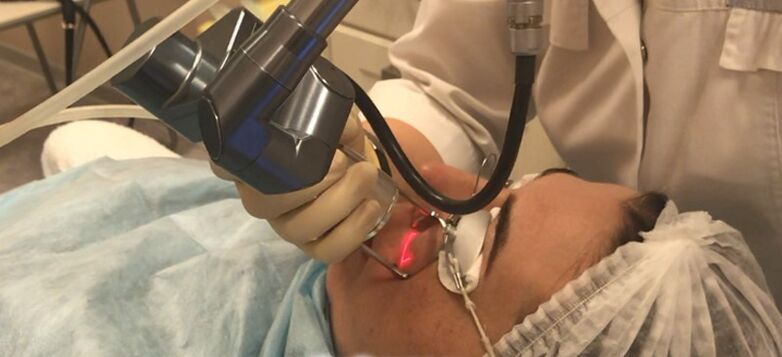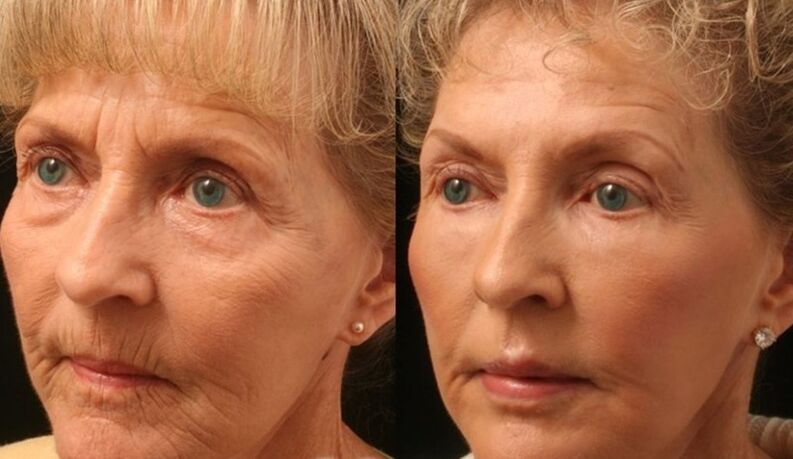
Who doesn't dream of beautiful and healthy young skin? Unfortunately, her aging is an inevitable process. With age, elasticity is lost, pores open, wrinkles and age spots appear. How to deal with this, and is it possible to do without surgery?
One of the most effective options is fractional laser pyrolysis. It is a non-surgical rejuvenation procedure that can address a wide range of age-related and cosmetic issues, including smoothing wrinkles and correcting scars.
How it works?
The photothermal process is based on the directed action of a laser beam, which is best divided into several hundred beams (so-called fractions, hence the name). When they touch the targeted skin, they cause small, temperature-controlled lesions.
In response to these microtraumas, a natural process of regeneration begins. There is an increase in the production of collagen - a protein responsible for skin color and elasticity. The damaged layer is completely renewed. The result - a pronounced rejuvenating effect, obtained mainly due to the activation of the natural internal resources of our body.
Indications for fractional pyrolysis
With this process, you can:
- smooth out small wrinkles;
- improve skin tone, make skin more elastic;
- Reduce adjustment: shrink pores, remove traces of acne (post-acne), small stretch marks, scars after burns or cuts and other scar defects;
- fade dark spots (even due to age);
- perform a complete laser peel - from surface to full resurfacing.
Overall, fractional pyrolysis is a popular technique, suitable for patients of all ages, and is considered the ideal choice for those who want a rejuvenating effect but are not ready to see an esthetician. America. It is allowed to work both on the face, including the delicate area of the eyelids and the skin around the eyes, and on the body - with the neck, eyelashes or hands, for example.

What devices are there?
The photothermal process is performed using a variety of CO2 and erbium lasers, two of which require special attention:
- Fraxel - has for a long time been a leader in the field, and by its name has become a household name for fractional rejuvenation procedures. Today it is considered obsolete, although quite effective. It comes in several varieties (re: store, re: fine, re: pair) designed to work with different skin types and at different depths.
- Mixto is the new generation laser and is the "gold standard" today. It differs from Fraxel in wavelength, and also uses special trajectories of the beam. Thus, in every way, it outperforms its famous predecessor: the process becomes more comfortable and secure, requires fewer sessions and recovers faster.
There are also plenty of similar devices out there, mostly of Asian origin. They may be similar to Fraxel and Mixto in principle of operation, but they are always inferior to them in safety, since they do not have such precise settings for the segment, intensity and depth of penetration of the beam.
How the procedure
The session begins with a consultation with a cosmetologist, where indications and other nuances are indicated. No special training is required, so you can directly work with the laser:
- The first step is to clean the skin. Then, a numbing medicine (usually a lidocaine-based gel) is applied to the target area.
- Patients and estheticians wear special glasses to protect their eyes from the effects of the laser.
- Next, the doctor adjusts the device - setting the depth of penetration, power in joules, pulse frequency and other parameters. They are selected depending on the problem to be solved.
- The esthetician then slowly directs the scanner onto the desired area of skin, delivering similar segments of light to that area of skin. This can be quite uncomfortable (depending on the individual's sensitivity to pain), but is generally tolerable - most patients often describe their sensations as a tingling or burning sensation. mild burning.
- The whole procedure, excluding preparation, takes about 20 minutes, the exact time depends on the size of the treatment area. Immediately upon completion, a gentle cream is applied to the face. You can go home and return to your usual routine with minimal restrictions.
How long is the recovery time after fractional pyrolysis and how to take care of the skin during this time?
Up to 24 hours after the session, the face is still red, sometimes slightly swollen. It seems like what happens when a person gets a mild sunburn. Fear not, this is a natural response that indicates the start of the rejuvenation mechanism.

The next day, characteristic brown spots appear. And on the third day, another sign of changes has begun to appear - the process of micro-exfoliation (removing old particles from the surface), however, is quite rapid. Also, for 1-2 weeks after the treatment session, tanning may persist, i. e. the effect of tanning.
There are some post-procedural restrictions, but it is extremely important to adhere to them, otherwise there is a risk not only of not achieving the desired effect, but also of complications:
- For 2-3 weeks, you can not sunbathe, including in the solarium, as well as take a bath / sauna (you can sunbathe the night before). At the same time, fractional pyrolysis itself is only carried out during periods of no solar activity.
- Moisturizing cosmetics (a light cream that does not clog pores) should be applied to the treatment area for the first few weeks.
- It is imperative to protect the treated skin area from strong mechanical impact. Until the wound is completely healed, all peeling and exfoliating activities, acidic creams are prohibited. Under no circumstances should you peel, scratch, or rub vigorously the area that has undergone laser pyrolysis.
The rejuvenating effect develops and reaches its peak within a month. To get accurate results with the Fraxel laser, in most cases a course of 3-6 sessions is required. Mixto deals with minor defects in 1 session, with more serious ones - in 2-3. The interval between them is several weeks to give the skin time to fully recover.

The final result has no "status quo", but it is logical that over time, under the influence of age and external factors, the skin condition will deteriorate.
Contraindications, complications and side effects
Like other hardware correction methods, fractional pyrolysis is not performed in the following cases:
- cancer;
- epilepsy;
- inflammatory skin processes in the target area (neurodermatitis, psoriasis, atopic dermatitis);
- Fresh Herpetic eruptions;
- acute infectious diseases;
- recent mid or deep peeling, mechanical dermabrasion;
- pregnancy and lactation period.
As for complications and side effects, the most common is hyperpigmentation in the treatment area. Fraxel, other lasers of the previous generation, with incorrect settings, can cause quite severe burns, possibly deep scarring. Mixto does not create such problems.
However, the effectiveness and safety of this procedure still largely depends on the esthetician: he must understand exactly what, why, and how he does it with such a powerful machine. Therefore, the way to avoid complications and other undesirable consequences is very simple - contact only a specialist who is experienced and knows how to work with modern lasers.
How much does fractional pyrolysis cost?
The cost of the service depends on several factors: the brand of the device used for laser correction, the volume of the treatment area, the duration of the course, and the qualifications of the specialist. Ask your esthetician for the exact amount.


























